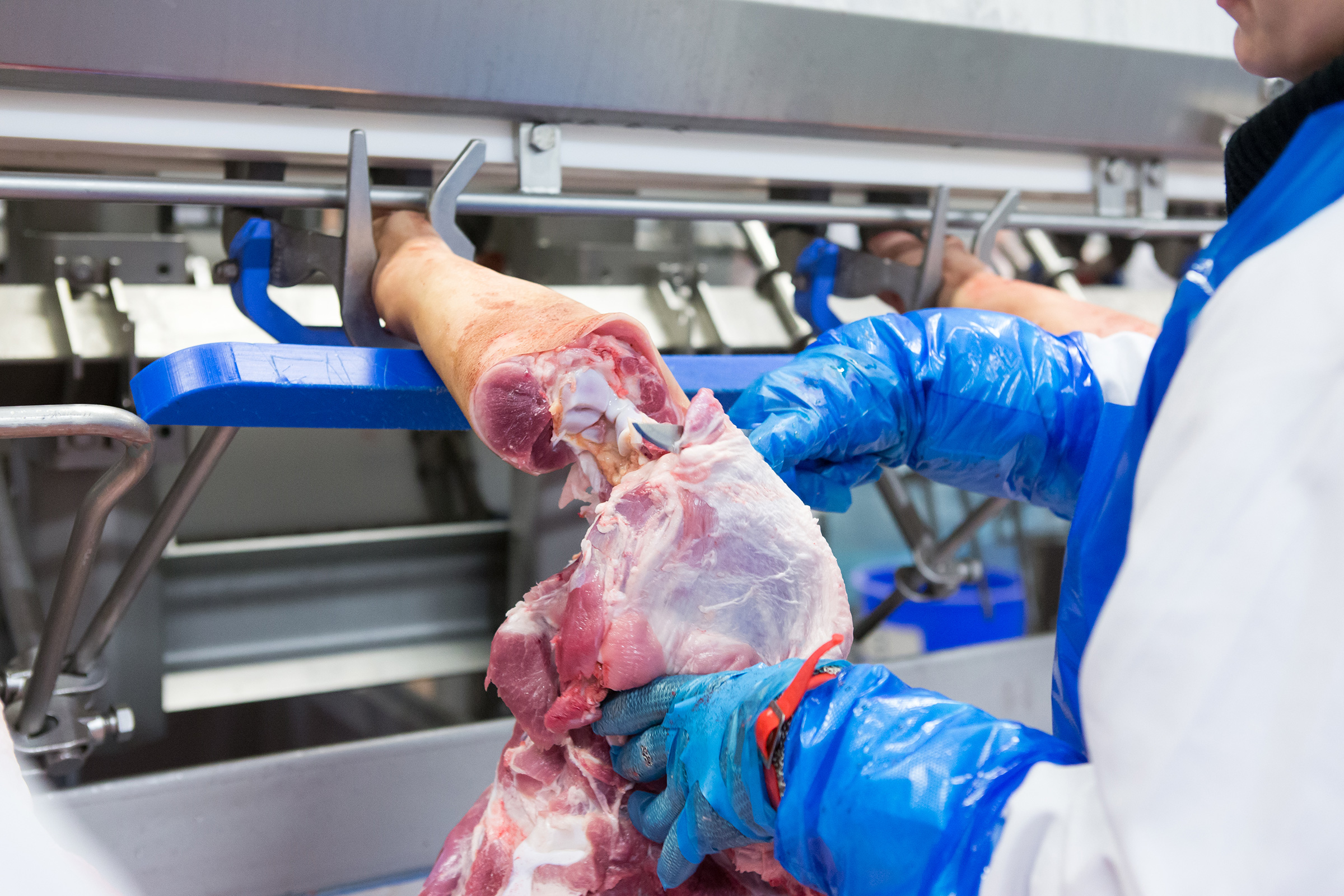DeboFlex eBook
1. Primal Cut: dividing the carcass
The journey begins with the primal cut, where the carcass is divided into its primary sections: the fore-end, middle, and hind-leg. This segmentation allows for better organization and efficient handling during subsequent processing steps. Each primal section offers specific cuts and contributes to a balanced product mix. Primal cuts can be achieved manually using saws or other cutting tools or with mechanical devices designed for this purpose.
2. Deskinning: precise removal of skin
Deskinning is a crucial step in pork processing, involving the delicate removal of the pork skin. This process must be carried out carefully to avoid damaging the underlying meat and fat layers. Various methods, such as hand-held or table skinners, can be employed for deskinning. The goal is to separate the skin, primarily composed of collagen, from the underlying fat.
3. Defatting: tailoring fat to specifications
Defatting is more than just removing excess fat; it involves cutting fat to specific specifications that cater to various product applications. The amount of fat left on the pork cut can vary depending on the desired product and consumer preferences. Defatting can be achieved through manual trimming, mechanical devices like fat trimmers, or automated trimming systems. Care must be taken to avoid over-trimming, which can result in meat loss and reduce overall product yield.
4. Deboning: removing bones with precision
Deboning entails the meticulous removal of bones from pork cuts. This step can be carried out manually or with automated deboning systems. The choice between manual and automatic deboning is not necessarily about the quality of the cuts but more about the flexibility and production volumes. Automated systems are generally suitable for higher volume operations.
5. Dividing: creating uniform subprimals
After the primal cut, each section can be further divided into smaller subprimals based on specific cuts required for various products. The primary goal of dividing is to produce uniform cuts of meat, ensuring consistent cooking times and visual appeal for consumers. This can be achieved through manual methods or mechanical devices such as cutting saws or automated cutting systems. Intermediate steps, such as pre-cutting shanks before final sawing, can also be included in the dividing process.
6. Demembraning: enhancing meat quality
Demembraning involves the removal of the thin membrane covering certain pork cuts, such as the top side and tenderloins. This membrane can be tough and chewy, potentially affecting the texture and flavor of the meat. Demembraning can be performed manually or with the assistance of mechanical demembraning machines. However, the necessity of demembraning depends on the specific product application and customer preferences. For certain products like ground meat, demembraning may not be necessary.
Process optimization and advanced solutions
Pork processing thrives on continuous improvement, where understanding market trends and adapting processes are key. Managing the flow of pork through each processing stage strategically can minimize bottlenecks, leading to improved productivity and reduced processing time. Advanced automation and intelligent systems contribute to streamlining the process, optimizing yields, and ensuring consistent quality.
Vertical cutting and deboning: a revolutionary approach
Successful pork processing hinges on understanding market trends, optimizing process flows, adopting automation and intelligent systems, and embracing innovative approaches like vertical cutting and deboning.
Vertical cutting and deboning is an innovative concept gaining traction in the industry that involves suspending the carcass vertically during the deboning process, allowing gravity to assist in separating meat from bones. The DeboFlex platform utilizes vertical cutting and deboning and provides better ergonomics for workers, improved space utilization, and increased productivity due to the optimized workflow. This approach aligns with the industry's demand for efficiency and sustainability.
To learn more about how vertical deboning can transform your pork processing, check out our eBook "DeboFlex: How vertical cutting and deboning is changing the game".

